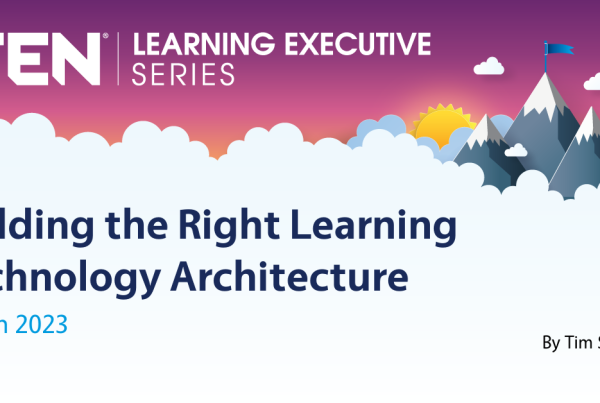
Engaging learners in training programs and online courses remains a challenge in today’s workplace. There has been a recent collective awakening of sorts that presenting an engaging and interesting program isn’t worth much if people don’t remember the lessons taught. This change in thinking is a beginning in how we are reframing our lens of memory as it relates to performance.
If a majority of your audience doesn’t remember the lessons, then no model can accurately show the impact of the dollars and time spent on your training. There have been some great resources that describe the neurological reasons why learners do not behave the way we expect in the short term. There also have been some great resources suggesting that as a collective community of professionals we need to design for behavior change. The focus on design and instructional design needs to be on designing information so it can be remembered because as Dr. Carmon Simon notes “People act on what they remember, not on what they forget.” (Carmon Simon, 2016).
The Purpose of Memory
A great start to help reframe our perspective on memory and performance is to really question the purpose of memory. As Dean Buonomano says, “The purpose of human memory is ultimately not to store information but to organization this information in a manner that will be useful in understanding and predicting the events of the world around us.” The challenge is that many times our success is measured in a single learning event or training delivery. When we think in the short term we have to deal with the fact that our brain was not designed for modern tasks.
Buonomano writes in his 2011 book how the structure of our brains reveal unexpected side effects when it comes to remembering and performing tasks. These side effects referred to as cognitive biases include Loss Aversion. Loss aversion is a description on how people’s behavior is impacted because the way they perceive a risk. The impact is seen in the decisions people make in many places in our life. I would recommend reading Buonomano’s book to get an appreciation how difficult it can be to design a training program to immediately impact behavior given our cognitive biases.
A Better Performance Model Based on Behavior Economics
Models that attempt to measure a return on investment for single learning events do not consider the cognitive biases that were previously mentioned. I agree we should try to improve any learning experience through some type of measurement, but I disagree on the approach. A major focus on a return on investment should be how to improve the learning experience the next time it is implemented. A new model must take into account the cognitive biases previously mentioned. After all, if these cognitive biases cause people to behave irrationally during a training event or make incorrect decisions after watching an e-learning course, then what value does a static model provide that ignores these biases?
A new dynamic and evolutionary model is needed to take into account the cognitive biases that Buonomano describes in his book. One such behavioral model was recently described by Stephen Wendel in his book Designing for Behavior Change: Applying Psychology and Behavioral Economics. Learning projects certainly can have an impact on behavior but only over period of time. Wendel’s model is an evolutionary way of thinking about designing learning experiences. It is through the analysis of using this model that over time you can start to understand why people don’t execute specific tasks and then modify your training delivery to create better engagement.
The model shown to the right, assumes for different reasons people will not become engaged and will not execute specific actions as intended. When the results have been collected using this model, opportunities can reveal themselves to drive interaction with your business partners on a better designed learning experience. The results of the model can provide an experience not just aligned to their business needs but something that can be focused and memorable.
Designing the Experience to be Remembered
“Remembering the past becomes useful if it gives us insights into future insights” (Simon,2016).
Dr. Carmen Simon has written an excellent book that focuses on designing information to ensure your audiences remember the event. Her 15 variables of influencing behavior are based on sound research and can be helpful for anyone looking to create memorable content. I concede that tools like Axonify and Q-Stream have their place to help strengthen the knowledge retention in some circumstances when the scope of the knowledge is clear and limited. Simon’s methods will help ensure what your audience does experience is memorable beyond the initial learning event.
Michael Gambale is a learning technology specialist with a B.S. in Computer Science and M.S. in Education. He can be reached at learning@michaelgambale.com.








